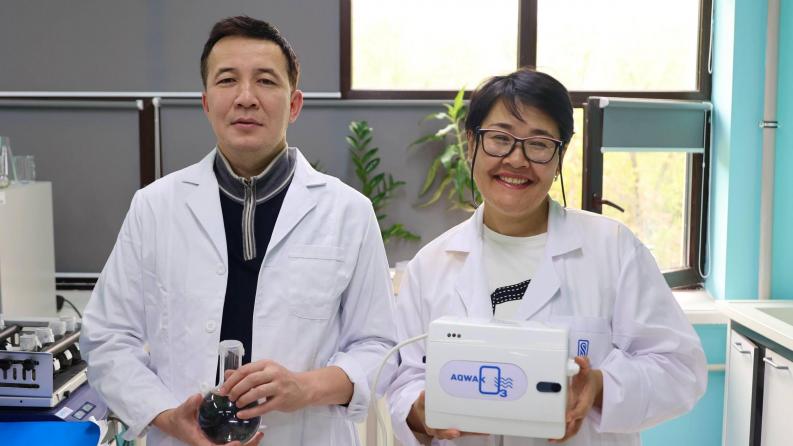Almaty scientists have invented a device for purifying and processing the drinking water

Satbayev University scientists have developed an innovative multi-stage drinking water purification installation that simultaneously purifies, activates, and disinfects drinking water. The prototype has been presented, ready for industrial production.
Providing the population with high-quality drinking water, including in remote areas, is one of the priorities of the state.
President Kassym-Jomart Tokayev, in his address to water workers, stressed: "Water has a special impact on the economy, environment, health of the nation and, in general, on all spheres of life. That is why it is so important that the water should be clean and accessible to everyone."
The scientific elaborations of Satbayev University make it possible to introduce new technologies into practice and help solve the challenges facing the country in the water security field.
To this end, a team led by the environmental engineer, PhD Dr. Umbetali Sarsembin has developed "AquaKoz" multifunctional device for multi-stage treatment of drinking water.
The uniqueness of "AquaKoz" installation lies in the fact that it preserves the natural mineral composition of the water. The development not only purifies water, but also promotes human health and longevity. After installation, the water acquires a redox potential from -130 to -150 mV, which is an indicator of bioactive water, with a pH value of 7.4.
"Our technology is based on the three-stage system: first, filtration and sorption remove mechanical and organic impurities, then ozoning destroys microorganisms and gives water antioxidant properties, and at the final stage heavy metals and residual pollutants are removed. The result is truly clean and safe water without metals, viruses and bacteria," said Umbetali Sarsembin.
The elaboration was carried out with the assistance of Science Foundation at RK Ministry of Science and Higher Education and partnership with the business community. The new device can be used in residential buildings and rural settlements, in medical institutions, the food industry and in emergency situations.










